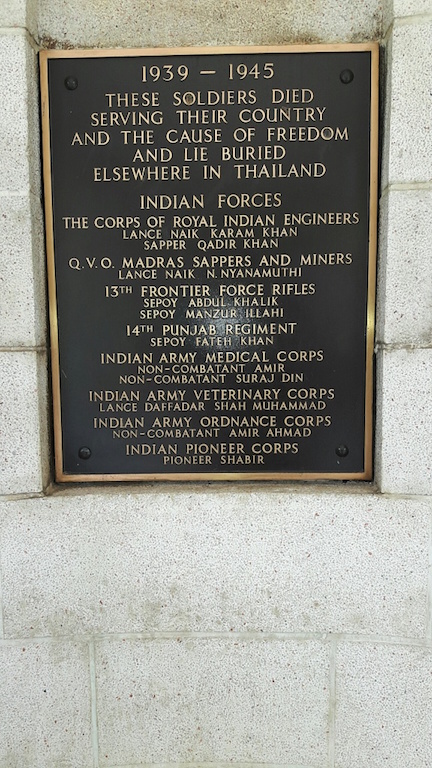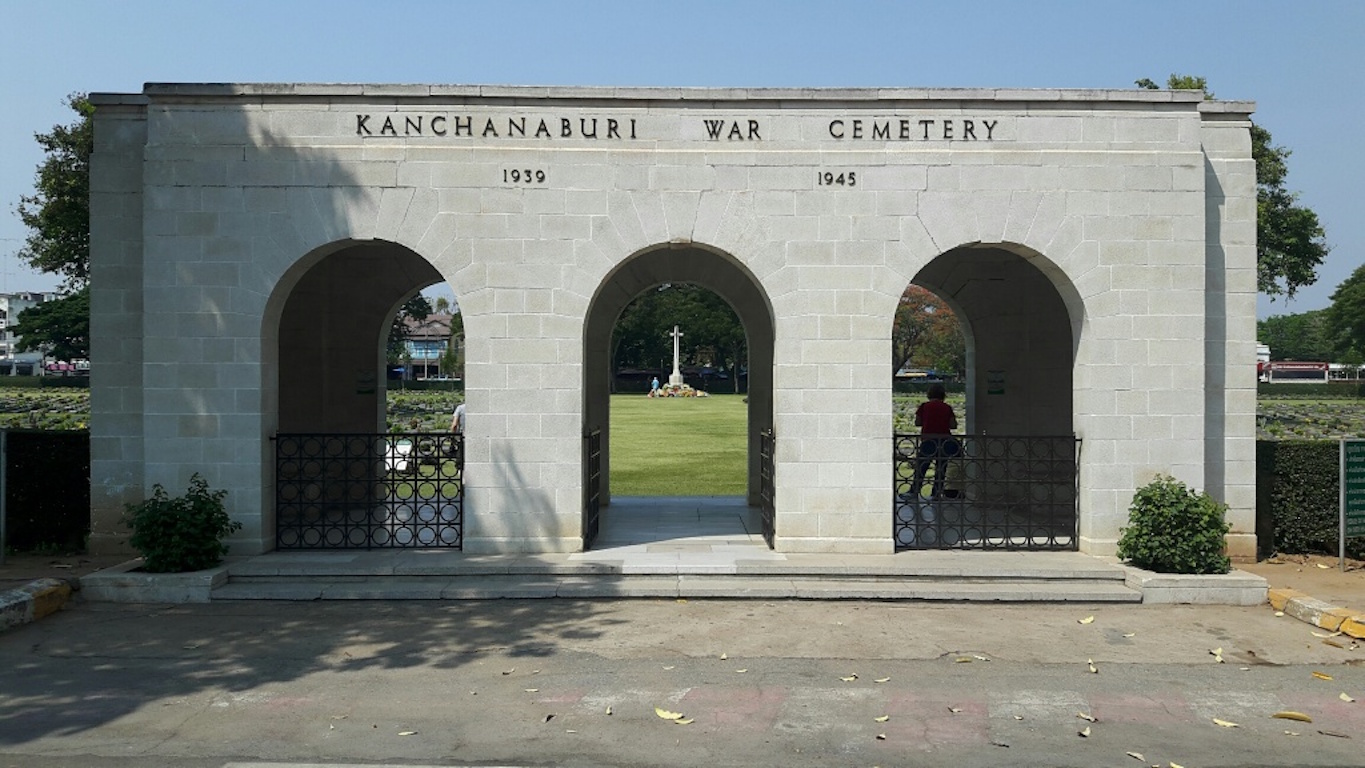Kanchanaburi Memorial
- Country Thailand
- Total identified casualties 11 Find these casualties
- Identified casualties from Second World War
- GPS Coordinates Latitude: 14.03193, Longitude: 99.52577
Location information
The town of Kanchanaburi is 129 kilometres North-West of Bangkok and is best reached by road, along the National Highway which runs from the capital. There are bus and train services from Bangkok. The Kanchanaburi Memorial is located in the entrance building of Kanchanaburi War Cemetery, which is situated adjacent to Saeng Chuto Road, the main road through the town. When approaching from Bangkok, the cemetery is on the left side of the road, towards the far (northern) end of the town. A Commission signpost faces the cemetery on the opposite side of the road.
Visiting information
ARRIVAL
The route to the cemetery is signposted and the cemetery is located at the side of Saeng Chuto Road, the main road through the town.
PARKING
There is a large car park at the cemetery with space for vehicles, the car park is firm and level. There is also on street parking nearby.
MAIN ENTRANCE ACCESS & LAYOUT
The main entrance to the cemetery is marked by a large, stone, triple arched memorial entrance building with two steps into building. Inside are stone benches.
There are bronze memorial panels inside the entrance building.
In front of the entrance building are two information signs.
The cemetery is a large rectangular shape, at the furthest point from the main entrance is the Cross of Sacrifice; behind it is a seating area with a stone bench. The cemetery is generally level and turfed throughout.
On the far-right side of the cemetery is the Stone of Remembrance. To the far-left side of the cemetery is a memorial shelter, which contains a stone bench. In this part of the cemetery there is a second seating area with a stone bench.
The cemetery memorial registers are stored in the cemetery service area and can be requested from the gardeners.
ALTERNATIVE ACCESS
It is possible to access the cemetery through the service entrance, next to the office building, where there are no steps.
ADDITIONAL INFORMATION
Opening times for the cemetery are as follows:
0800 hrs – 1700 hrs Monday to Friday
0800 hrs – 1200 hrs Saturday.
Please be aware that there may be snakes in the cemetery.
History information
The notorious Burma-Siam railway, built by Commonwealth, Dutch and American prisoners of war, was a Japanese project driven by the need for improved communications to support the large Japanese army in Burma. During its construction, approximately 13,000 prisoners of war died and were buried along the railway. An estimated 80,000 to 100,000 civilians also died in the course of the project, chiefly forced labour brought from Malaya and the Dutch East Indies or conscripted in Siam (Thailand) and Burma (Myanmar).
Two labour forces, one based in Siam and the other in Burma worked from opposite ends of the line towards the centre. The Japanese aimed at completing the railway in 14 months and work began in June 1942. The two sections of the line finally met near Konkoita towards the end of October 1943 and the completed line, 424 kilometres long, was operational by December 1943.
The graves of most of those who died during the construction and maintenance of the Burma-Siam railway (except for the Americans, whose remains were repatriated) were transferred from camp burial grounds and isolated sites along the railway into three cemeteries at Chungkai and Kanchanaburi in Thailand and Thanbyuzayat in Myanmar.
The KANCHANABURI MEMORIAL stands within the entrance building to Kanchanaburi War Cemetery. It records the names of 11 men of the army of undivided India buried in Muslim cemeteries in Thailand, where their graves could not be maintained.
KANCHANABURI WAR CEMETERY is only a short distance from the site of the former 'Kanburi', the prisoner of war base camp through which most of the prisoners passed on their way to other camps. It was created by the Army Graves Service who transferred to it graves along the southern half of railway, from Bangkok to Nieke. More than 5,000 Commonwealth and 1,800 Dutch casualties are buried or commemorated in the cemetery.
The cemetery was designed by Colin St Clair Oakes.



